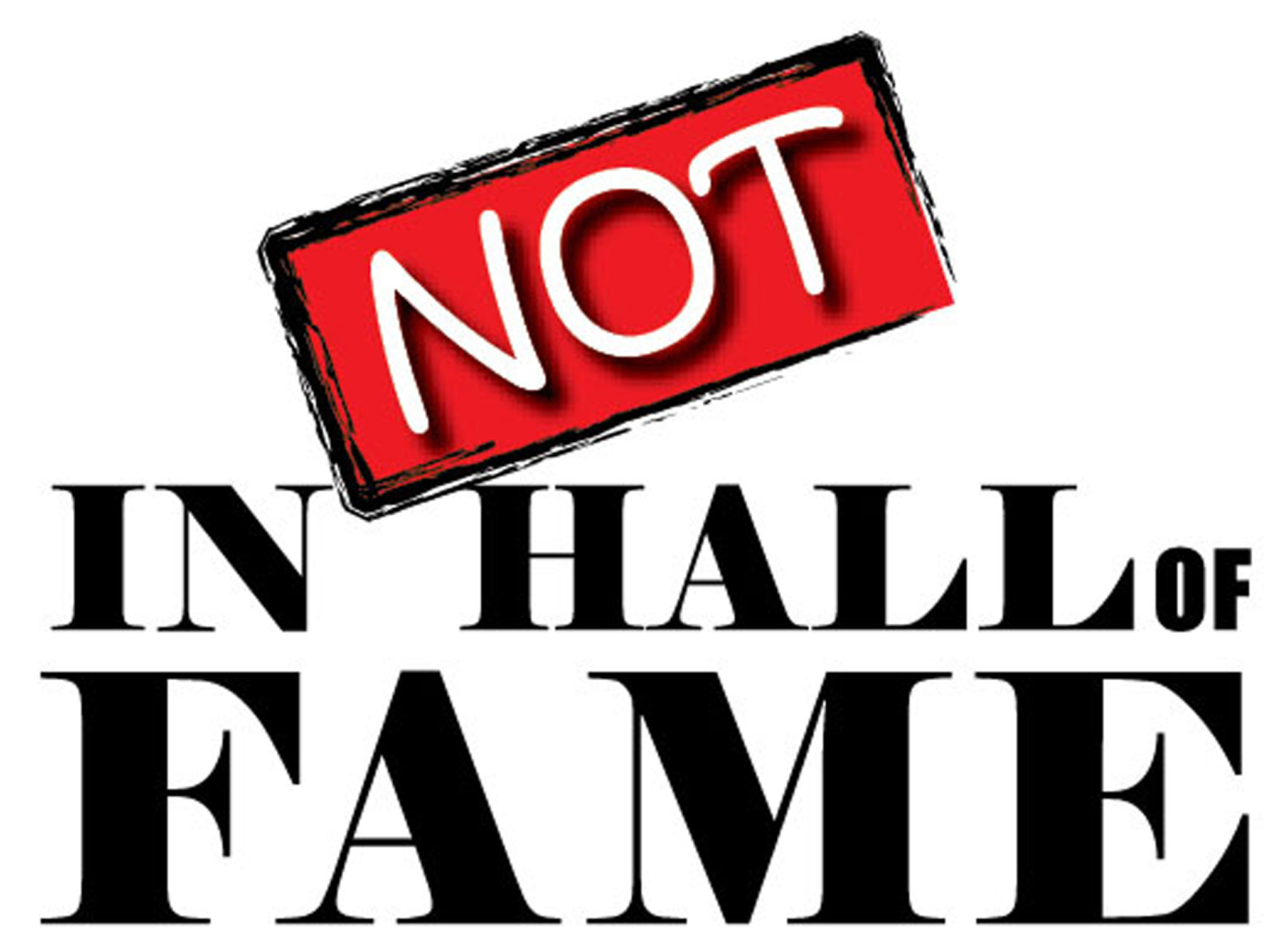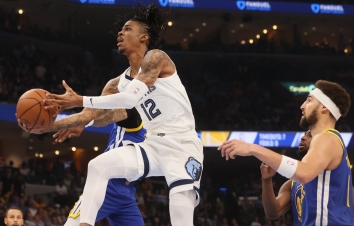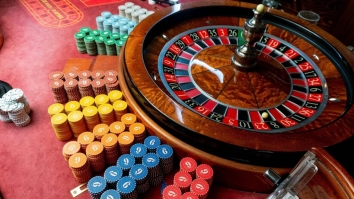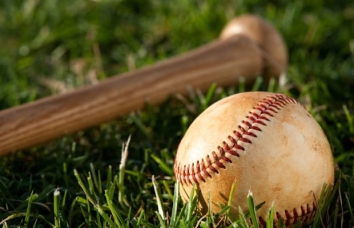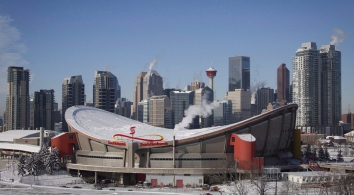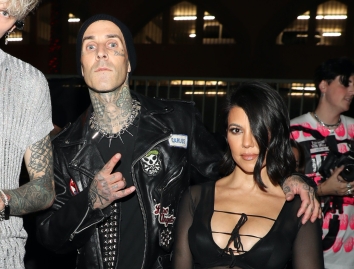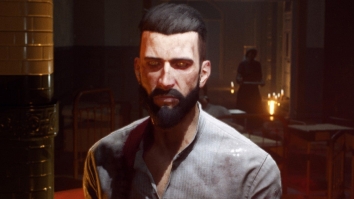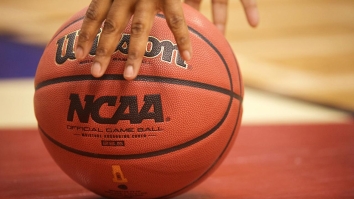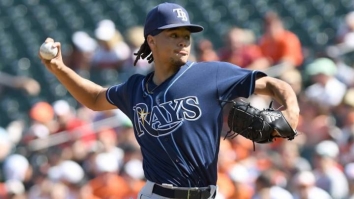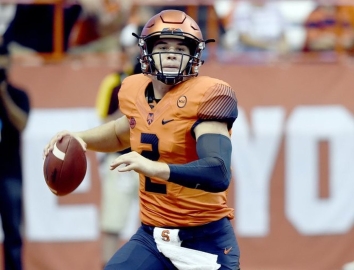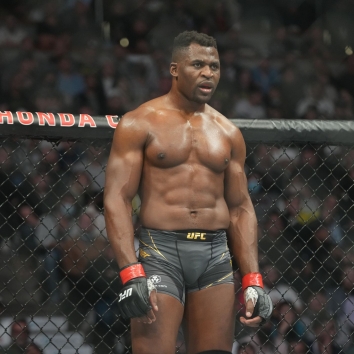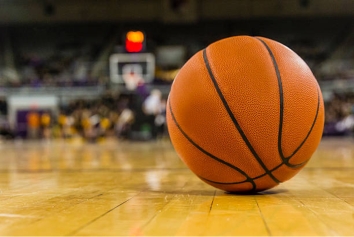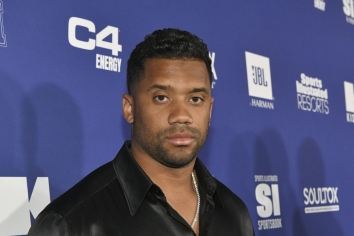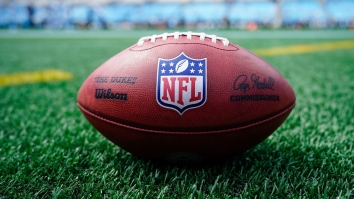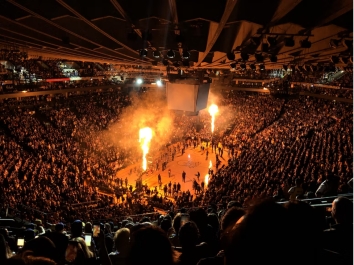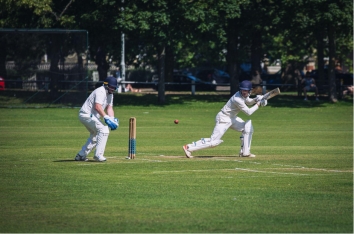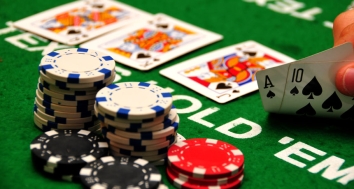From the Desk of the Chairman
Tips for Betting on Basketball
Sports betting is an industry that can often feel as large as that of sport itself. Similarly, you can be into sports betting and yet only experience a narrow slice of it due to the fact that all of your attention is focused on one sport. This might be a sport that you prefer or find yourself more familiar with, but the point still stands – there are new horizons to conquer, if you feel inclined to do so.
While football and horse racing often find themselves to be at the top of sports betting popularity lists, basketball is never far behind. It’s a sport that is more popular in the USA than the UK, where the former two might be preferred, so taking the time to acquaint yourself could be a good first step.
Getting Some Tips
The idea of betting on a sport that you’re completely unfamiliar with is something that comes with its fair share of hurdles, chief among these might simply be that you don’t have a sense of what’s a good bet and what’s completely clueless. If your level of knowledge regarding basketball is that low, brushing up on some basic statistics and fixtures could begin to give you an idea of what the landscape is looking like, but beyond that, you might need more specialist advice.
Knowing where to go for the best sports picks can mean that you begin to incorporate this advice into your own knowledge, allowing you to go to the best online sportsbooks with more confidence, and the more you practice, the stronger you’ll feel in this regard.
Watch Some Games
If betting is your priority as you try to get into basketball, it’s understandable that you would be eager to get the preliminary research out of the way as quickly as possible so you can get back to what you find most interesting about this whole experience. However, while you can read up all you want about the statistics and advised direction of bets, it might not mean all that much to you if you don’t have much familiarity with the game itself. For that reason, you might find that it’s a good idea to actually watch some games for yourself. If you’re in the UK, doing some research into which channel to head for here can be a good place to start.
Look Outside of the Game
How any given sport functions can vary greatly from one to another, so you might find that simply taking your knowledge from something like football and trying to apply it here won’t work. With basketball, for example, you might find that it benefits you to look outside of the one game that you’re betting on, to get an idea of how fatigued each player will be when it comes to that game in particular. With multiple games being played in a short span of time, factors such as this can make a big impact, and it could be something that you’re entirely unaware of if you’re unfamiliar with the sport.
The most popular casino games of all time, revealed
Though new casino games and variations pop up now and then, the most popular games of all time never change. When it comes to popular casino games, nothing beats the classics!
From blackjack to slots, casinos offer a wide range of games to keep players entertained. Keep on reading to discover the most popular options of all time; maybe your favorite will be on this list too.
Top casino games
Whether you’re new to casinos or a seasoned player, we’ve rounded up the top casino games to help you decide on your next game. Try all of these to get your skills up to scratch!
Blackjack
Did you know blackjack is one of the most enjoyed casino games in the world? This casino classic uses a 52-card deck, and players face off against a dealer while playing. The aim is to beat the dealer, but this isn’t always as easy as it sounds.
While this is a popular game in land-based casinos, it’s also popular in online gambling. Many websites offer live dealers to make the game even more exciting. You can even find live blackjack in Canada — perfect for an evening of fun.
Poker
Some casino fans think poker is the greatest game of all time, and it certainly is a classic game. This casino staple involves players wagering which hand is the best according to specific game rules. Did you know that poker was initially played with 20 cards? Today this popular game is played with a full 52-card deck.
Roulette
Roulette comes from a French word that means little wheel, but this casino game was developed by Biribi, making it an Italian game. You need a wheel with slots and a marble-like ball when you play roulette. This game requires a dealer to spin the roulette wheel too. While you can find this game in online casinos, it’s also a popular land-based casino option.
Baccarat
Baccarat is another top-rated casino game. This game was even popular among French nobles during the 19th century and in theNapoleonic era. Baccarat used to be played in private gaming rooms, but after casino legislation in 1907, it became a staple of public casinos. This is a comparing card game and has players compete against the banker.
Craps
Have you ever played craps? Also referred to as seven-eleven, this casino game involves betting on the outcome of dice. Players often wager money against a bank or each other, and the closest bet wins. Some think this game originated with Roman soldiers, and others believe it came from an Arabic dice game, but no one is 100% sure where it came from.
Slots
Finally, slots aren’t necessarily tabletop casino games, but they’re definitely one of the most popular casino games available. Slots involve pulling a lever on a slot machine with the goal of getting three matching symbols or specific bonus symbols. Traditionally, slots have three reels, but five, six and seven reels are available too.
This game is frequently found online and in land casinos, proving its popularity. Online casinos also offer themed slots, progressive slots and extra spins to make the games even more exciting.
Final thoughts
Are you a casino player? The most popular online casino games of all time are well-known and played worldwide. If you’ve never tried these unique games before, give them a try and see what the fuss is about for yourself!
2022 MLB Draft Top Prospects: Ranking Top Players and Prospects for this Year's Draft
Today, the five men who have all the lights on them, who are they? What team do they belong to? Pay close attention to these names below and their teams' MLB odds, the Rookies of the Year will surely come from here.
Top 5 MLB Prospects 2022
1. Bobby Witt Jr. (3B/Royals)
The second pick in the 2019 draft. Bobby Witt Jr., 21, also plays for SS, but in 14 games this year, he has only been in the hot corner.
In Spring Training, he hit .406, with 3 home runs, 8 RBIs, and just 3 strikeouts. Plus, he slugged .781 in 32 at-bats.
So far this season, he has a .203 avg, 5 RBIs, and 5 runs scored. He just had 12 hits in 59 opportunities.
The Kansas infielder is projecting a .264 batting average, 18 home runs, 67 runs scored, and 67 RBIs.
2. Adley Rutschman (W/Orioles)
The Portland native catcher was the No. 1 pick in the 2019 draft, but he's not a big leaguer yet. He didn't even see action in Spring Training, but his decent offense and above all, the guarantee he gives with the glove, are the most outstanding aspects of this 24-year-old player.
In 2021, between AA and AAA games, he batted .285 avg, with 25 doubles, 23 home runs, and 75 RBIs.
He is projecting .255 on offense, with 13 home runs, 15 doubles, and 43 RBIs. Of course, it remains to be seen; he is not even on the major roster yet. Rutschman is expected to make his MLB debut in late April.
3. Julio Rodriguez (OF/Mariners)
The No. 3 prospect on the circuit signed as a free agent in 2017 for a $1.75 million bonus, and so far, this season he's batting .200 with just 12 hits in 60 at-bats. He is 21 years old.
He hasn't knocked it out of the park yet and has 25 strikeouts to his name, the most this year for an American League player.
He had a .412 offensive average in the warm-up games, with 3 home runs and a .794 slugging percentage. His projections of him with the stick? .273 avg, 17 homers, 63 home runs, and a .442 slugging percentage.
4. Spencer Torkelson (1B/Tigers)
The pick 1 of the 2020 draft succeeded Miguel Cabrera in the initial of the Detroit team. Even in Spring Training, Torkelson got off to a slow start: he hit .258 with a .484 slugging percentage, 1 home run, and 4 RBIs in 15 games.
The 22-year-old 1B's projections for this year are a .260 avg, 25 home runs, 52 runs scored, and another 61 RBIs.
The one from California is emerging as a hitter capable of taking some balls out of the park and with a defense that is possibly better than his performance with the wood.
This season, he has a .224 avg, 3 home runs, 8 RBIs, 6 runs scored, and a .429 slugging percentage.
5. Riley Greene (OF/Tigers)
The Tigers have in Greene and Torkelson two pieces of great value that can give Detroit fans joy for years to come. The Cats own none other than prospects 4 and 5 of the entire big top.
Greene, 1.91 meters tall, and was the fifth selection in the 2019 draft, is a fast, agile player, with a good job both offensively and defensively.
Unfortunately, he has not been able to debut in the big leagues due to a fracture in his right foot that he suffered in an at-bat in Spring Training.
The pitcher in that game was Gerrit Cole. Greene swung and managed to hit the ball, and that 'the dog bit him’. Luckily, he didn't need surgery, but he doesn't have a return date yet.
In the warm-up games, he had 9 hits in 21 at-bats (.429), took out two balls, scored 6 runs, and drove in four.
The Rest Of The Top 10
- Grayson Rodriguez (RHP/Orioles)
- Gabriel Moreno (W/Blue Jays)
- Anthony Volpe (SS/Yankees)
- CJ Abrams (SS/Parents)
- Francisco Alvarez (C/Mets)
The 10 names on this list have the talent to achieve great things, and they can all surprise us. Let's see which prospects end up stealing the show.
Where Can You Play Sports and Be Active in Calgary?
Moving to a new area can be stressful, especially if you're used to keeping an active lifestyle. It can be hard to figure out where to start or how to join a team, especially as an adult.
If you're here and you're ready but not sure where to go: this is how you can play sports and be active in Calgary.
Why Do Sports as an Adult?
Some assume that sports are only for kids, but they'd be wrong. Sports are an awesome way to get your mind and body working together as you problem-solve, work to stay agile, and try to keep your opponents on their toes. Getting to work as a team with other athletes is incredibly rewarding, and by being on a team, you get to share every single success and downfall that happens. Although this isn't always fun, it's better than doing it alone.
Gyms
Although many may think that a gym is a solo experience: you get to connect with countless people every time you go. This sense of camaraderie grows over time as long as you talk to other gym members and get to know people. Look for sign-up sheets for teams or try-outs, and ask around if anyone knows about any local non-professional teams. Although there may not be any yet, if you get enough people interested, you can start one on your own.
Sports Clubs
Sports clubs are a large part of getting to meet other athletes and sports fans! The Calgary Sports and Social Club offers sports leagues that are not only co-ed but are open to try-outs from anyone who wants in! They're not the only sports club in the city, which means you can ask around and figure out which one interests you the most if you can wait until you're accepted by one before you turn any others down. Being polite and friendly will get you far here.
Some require a sign-up fee, and most require set practice hours like any other team, so make sure you have the disposable income and extra time required for this.
Community Sign-Ups
If you buy one of the many amazing Calgary homes for sale: you become part of a community. Some neighborhoods and even streets create teams for hockey or soccer and compete against each other. Ask around in your area, talk to your HOA or your neighbors, and figure out if they know about any local community teams.
If this is especially important to you, ask before you buy the house. This can ensure you have the best chance possible of landing a team.
Some employers Calgary Is Full of Options.
Calgary is one of the best places to live because everyone understands the importance of a work-life balance and gets that it's better to have fun as a team. If you're ready to get back into motion and want to join a team to make this easier, try some of the ideas above! You may find your next awesome friend group!
A Comprehensive Guide To Skateboarding
Whether you have recently taken up skateboarding as a hobby and are looking to take your pastime to the next level and maybe even start entering competitions, or else have been skateboarding for many years and are looking to learn more interesting facts about the sport, you have come to the right place.
Skateboarding is an extremely challenging yet ultimately rewarding extreme sport with a rich and diverse history. Here, for your reading pleasure and, of course, information, is a comprehensive guide to skateboarding and fascinating facts you never knew you didn’t know.
Skateboarding For Kids
Aside from the obvious fundamentals when teaching your child or children the basics of skateboarding, one thing you must not forget to impart is how to fall off the skateboard safely.
There is a simple way, both for you and your child, to get the proverbial hang of falling off a skateboard in the safest way possible with a simple set of rules:
- Push down once towards the ground (ideally grass or another soft surface)
- Once you hit the ‘deck’, the skateboard will either stop completely or slow down
- Allow yourself to fall forwards
- Tuck your forward-facing shoulder down into your body (like you are preparing for a somersault)
The best way to ensure this technique is ingrained in the minds of your child and to allow them to feel comfortable in getting into this position is to encourage them to practice it again and again for as long as they need.
Protective & Safety Wear
It is absolutely essential to invest in the correct safety wear, whether you have been skateboarding for many years now or else are only just beginning your skateboarding journey.
The most important item of protective wear is a helmet. Ideally a Triple 8 Certified Sweatsaver, and as a strict rule, you should never even fully stand on a skateboard, let alone move on one, without wearing a good quality and durable hard helmet. Other important items of safety wear when skateboarding include knee and elbow pads,
Tips For Starting Out As A Skateboarder
As with any other sporting activity, be it in a professional and competitive sense or else as a personal and enjoyable hobby and skateboarding is no different. Arguably, as skateboarding is actually classed as an extreme sport, there are even more guidelines that should be adhered to when starting out as a skateboarder:
- Set realistic goals and be patient
- Research into the Ollie Stationery
- Ask for professional and personal advice on how to improve
- Always practice and learn on grass rather than on a hard floor
- Never compare yourself to other skateboarders
- Be sure to consolidate your progress
The Three Main Skateboarding Stances
Naturally, once you become comfortable on a skateboard, you will develop your own stance and posture. However, it is regularly necessary to adopt certain positions to complete tricks and moves and even keep the board running straight and smoothly.
The ‘Nollie’ is when you are positioned on the skateboard with your leading foot as forward as possible, with your foot balanced on the edge of the nose. The ‘Fakie’ is how you naturally stand and position your body but essentially backward on the board, and the ‘Switch’ is when you stand with your less prominent leg and foot forward.
5 Rock Star Hookups That Turned into a Relationship
Everybody loves hookups because they are fun and exciting. Seeing the passion in the eyes of someone new, someone you barely know, while they give you a satisfied look is one of the best feelings in the world. And if anyone gets used to that feeling, those must be rock stars. They can get a hookup whenever they want with almost anyone they want. Nowadays, that’s possible for regular people as well. Online dating sites gather people seeking the same type of relationships, so getting extremely casual dates isn’t a big deal. But we won’t make a list of rock stars who love hookups because that would include 99% of them. We’ll look into stars who stayed with their partners after a night of fun.
Travis Barker and Kourtney Kardashian
Travis Barker is one of the best drummers in the last 30 years who played for The Aquabats, Box Car Racer, +44, The Transplants, and Blink-182. He’s no stranger to hookups and relationships with stunning women, but one stands above the rest.
Kourtney Kardashian is one of the Kardashians, so she’s famous for being herself. Travis and Kourtney have been friends for years, but they’ve hooked up in 2021 (or late 2020). That wouldn’t be surprising because celebrities hook up with each other. The surprising part is that Travis and Kourtney stayed together and became a real couple. So all the guys who hope to see Kourtney’s profile on the site for a local hookup can lower their hopes. They won’t meet any Kardashian there, but they can meet many local girls and get casual dates. There are even dating sites only for celebrities. However, regular people can’t join them, so it’s better to stick to proven sites.
Benji Madden and Cameron Diaz
Benjamin Levi Madden is an American musician, singer, songwriter, producer, and the founder of the band Good Charlotte. He plays the lead guitar and sings as a backing vocalist. Benji founded Good Charlotte in 1996 with his identical twin brother. They’ve collaborated with other musicians, but Benji fell for an actress.
Cameron Diaz is cute, bright, and stunning. One of Charlie’s Angels became Benji’s personal angel after a casual hookup. The couple got married in 2015, and they have a daughter together. Cameron said that she loves her husband for teaching her how to value herself more. Guess even Hollywood stars also have self-esteem issues. They never had any trouble in the relationship like some other rock stars. Simon Le Bon from Duran Duran is just one example.
Pamela Anderson and Tommy Lee
Sadly, Pamela Anderson and Tommy Lee weren’t that lucky. And no, we aren’t talking about the famous video. We’re talking about domestic violence that led to their divorce after only 3 years of marriage. But let’s start from the beginning.
The couple met for the first time in the Hollywood club Sanctuary on New Year’s Eve in 1994. Pam approached Mötley Crüe’s founder and drummer to give him her number. They hooked up but quickly fell in love, so they stayed together. They have 2 sons together.
Alice Cooper and Sheryl Goddard
Alice Cooper and Sheryl Goddard have been together for over 40 years. Read that again. He’s a rock star who could hook up with most women on Earth, yet he’s married to the same woman for 40 years. Sheryl Goddard is one of the happy ladies who managed to seduce rock stars, but she’s also one of the rare ladies that might spend 50 years married to the same rock icon. The couple met in 1975 when Sheryl began dancing in Alice’s stage performances.
David Bowie and Ola Hudson
Most people don’t know who Ola Hudson is, but this story becomes much better when you know that lady is Slash’s mom. Yes, the legendary guitarist of Guns N’ Roses had to deal with a rock star dealing with his mom. David Bowie dated Ola Hudson for a while when Slash was a little boy. Slash even shared that Bowie used to tuck him in at night as a stepdad would do. Who knows how many celebrity stories like that one will never become public. Too bad.
We see rock 'n' roll stars build relationships and want to follow our idols. These contacts can be a one-night stand, or something more serious. In both cases, online dating is a good option for finding dates if you don't have a strong fan base and don't hang out at fashionable parties.
Top Overlooked Games That You Need to Try
The standard of computer games has only risen over the years as we get classics, expand them, make them better, and also come out with new and exciting games at the same time. As such, gamers today are absolutely spoilt for choice when deciding what they would like to play.
There are a number of exciting games, such as sporting NFL games where you can play as some of the best players in the world, shooter games, and sci-fi games that transport you to a new world. Of course, where we have classic games and games that get the recognition that they deserve, we also get some titles that fall under the radar and remain overlooked. This is a real shame because they are usually excellent games to play and have simply not been picked up because of poor timing of their release.
This article is going to go into a bit more detail about what some of these overlooked games are and why people should play them.
Many Online Casino Games
Online casino games were already seeing a huge rise in popularity, but this was accelerated in recent years as a result of the pandemic. Many people who were happy going to casinos are now more content within the confines of their own homes, enjoying some of the new and different games that have been made available.
Your favourite slots are already available on a number of different online casino websites, but the sheer number of options means that many are overlooked. Different online casino sites do not just have the game roulette or slot machines but instead have a number of variations on the classics. As such, you tend to find that a lot of amazing titles do not get the recognition they deserve, as they are competing against a number of different games at the same time.
Roulette is an incredibly popular option on these gambling sites that you should certainly consider trying. If you want to find some of the different roulette games available then be sure to check this website.
Vampyr
This game is one that was released on a number of consoles, including PlayStation and Xbox. This was a product of Dontnot Entertainment, which created the game Vampyr and set it just after World War I. It was an action-role-player where the player takes on the persona of a doctor who has just been turned into a vampire. The doctor is left in an incredibly awkward position, as he has to then decide whether or not he should stick to the Hippocratic Oath or feed on the living.
The world that is established within this game truly is unique as players meet an exciting range of different characters, all of whom (more or less) can be sacrificed with the intention of helping your character become stronger. There are a number of supernatural abilities at your disposal, as well as a cool and atmospheric take on London, all of which come together and make a great game to play.
The Surge
The Surge is the product of Deck13, which released the game on PlayStation, Xbox, and PC. It was very different from their previous fantasy game, Lords of the Fallen, as The Surge has a very heavy science-fiction and action RPG style to it. The game played with a limb-targeting system available, which allowed players to improve their aim on those they were trying to hit. There were also different exo-suits and upgrades for those exo-suits available, which meant that players could tailor their characters, so they were more suitable for them. There was a sequel released, which seemed to get a bit more praise, but the original was definitely overlooked and is certainly worth a play for anyone who is interested in science fiction games.
Nex Machina
Released on the PC and PlayStation, Nex Machina was developed with the designer Eugene Jarvis, who helped contribute toward what may well be one of the best arcade shooters ever made. There is no getting away from the fact that the game is incredibly difficult to play, but the controls are very smooth, the abilities are simple, and the enemies are huge. Fighting bosses can become a hectic affair, and doing it without dying a dozen times is more or less impossible, but that just adds to the excitement of the game. Nevertheless, this one fell under the radar, and not many people ended up playing it.
Conclusion
Thanks to the massive array of games available and the high standard of said games, it is common for a lot of excellent titles to get overlooked. These are discussed in more detail above and are certainly worth playing if you haven’t already.
Active Coaches With The Most NCAA Tournament Wins
We put a great deal of emphasis on regular-season records and star players who make up the top teams. However, coaches play a significant role when it comes to predictions on NBA lines. The minds behind the success are frequently overlooked. Coaches are as important as star players or a seasoned roster. If a squad isn't well-coached, they'll likely be leaving early.
Mike Krzyzewski continued to add to his already outstanding NCAA Tournament victories as March Madness progressed, and Duke continued to smash their opponents to the end of his career. Krzyzewski has won the most games as an NCAA men's basketball coach. He made history by becoming the first men’s basketball coach to win 100 games.
The top ten active head coaches with the most NCAA tournament victories are as follow:
Mike Krzyzewski (Duke with 100 wins)
With 100 victories, Krzyzewski holds a commanding lead in this area, and he has the opportunity to add to his total before retiring at the end of the season. He has cemented himself as one of the best playoff coaches in college basketball history, with 36 National Championship participations and five national titles.
Jim Boeheim (Syracuse with 57 wins)
Ever since the 1976-77 season, Boeheim has been the coach at Syracuse, and he has been on the winning side of numerous NCAA Tournament games throughout that time. On 20 occasions, Boeheim has led Syracuse to round sixteen or further. His team won the national title in 2003, and he has made four additional Final Four outings.
John Calipari (UMass, Memphis, Kentucky with 53 wins)
Calipari has already been to NCAA Tournament 20 times throughout his stints at UMass, Memphis, and Kentucky. His postseason success has skyrocketed since he arrived at Kentucky in 2009. He led the Wildcats to the Elite Eight and the national championship in his first 12 years at the club.
Tom Izzo (Michigan State with 48 wins)
Michigan State has been a perennial NCAA Tournament contender for decades, and under Izzo’s leadership, the Spartans have made numerous deep runs. They have featured in seven Final Fours throughout that period, including a national title run in 2000.
Bill Self (Oral Roberts, Tulsa, Illinois, Kansas with 47 wins)
Since his career at Tulsa, Self has already had March Madness success. He has led three separate college teams to the Elite Eight: Kansas, Illinois, and Tulsa. He led his club to March Madness in each of his previous 24 seasons as a coach, except for 2020 due to the lockdown.
Bob Huggins (West Virginia with 33 wins)
Huggins not only led West Virginia to a Final Four appearance in 2010, but he also elevated the Cincinnati basketball program higher than they were. Huggins led the Bearcats to the NCAA Tournament 14 times during his 16-year tenure as coach. Huggins has 25 NCAA Tournament participation between three separate institutions.
Mark Few (Gonzaga with 28 wins)
Since taking over the Gonzaga team in 1999, Few has piled up NCAA Tournament victories, quickly climbing the leaderboard. The Bulldogs have advanced to the Sweet Sixteen ten times under Few’s leadership. Despite all of his postseason success, he's still looking for his first national title.
Jay Wright (Villanova with 27 wins)
Wright has been the head coach at Villanova for the past two decades, and he has transformed the program into something that no one wants to play in the NCAA Tournament. The Wildcats have been a staple of March Madness since 2005, but their performance has improved dramatically during the last six or seven years. In 2016, Wright guided Villanova to the national title, then shortly afterward, in 2018, he repeated the feat.
Rick Barnes (Tennessee with 22 wins)
Barnes has led four basketball programs to the NCAA Tournament: Providence, Clemson, Texas, and Tennessee. It's a tremendous accomplishment in and of itself, but Barnes’ biggest issue is that most of his squads have been eliminated early in March Madness.
Ben Howland (Mississippi state with 19 wins)
Howland enjoyed a lot of postseason success towards the conclusion of his tenure at Pittsburgh and most of his time at UCLA. Howland led the Bruins to three consecutive Final Four games and one national championship game from 2006 to 2008. However, when Howland took over Mississippi State, those postseason appearances vanished.
Tips for Hiring the Right Men Sports Shoes Suppliers
Many young people are in love with sporting activities such as running and soccer. Some take it to earn their living, while some do it for fun. Most of these fanatics desire to succeed, though not all pursue their target goals. This is because of the choice of shoes they take for sports. Always consider the quality of gear to buy and the best legwear to stay fit. Below are tips to guide you in hiring the right men's sports shoes suppliers.
Cost-effective
Sports shoes have become slightly expensive compared to other footwear. This is due to designers, seasons, and the kind of soles used for speed. The men sports shoes suppliers have always given higher price tags, but recently, suppliers like DHgate have come to the rescue of sports fans by offering cost-effective sports shoes for men. So many individuals would instead go for cheaper shoes but stylish.
Durability
Sports shoes are always made for one to withstand bruises and bumps. They are made differently compared to regular wear, which is not strong. Sports shoes for men are also made to withstand a lot of friction during the game. Men sports shoes suppliers should offer long-lasting shoes for wear that are affordable at purchase just like vessi.com.
Multitasking wear
Sports shoe suppliers ought to offer more comfortable shoes for the feet. They should be shoes that, when worn, there's at least a thumbnails length of free space left for support. The shoes can be for running as well as for soccer. The shoes should also be used in both indoor and outdoor sports activities.
Stylish
When you find comfortable shoes that fit well, consider having on other outfits of your choice. Many suppliers offer a wide variety of sports shoes for men, so it's hard to resist having one of your favorites in the wardrobe. Most stylish sports shoes for men are from reliable suppliers like DHgate at a reasonable cost. Even professionals in sports go for fashionable legwear for comfort.
Warranty
Sports shoes are put to hefty usage and therefore are made out of durable materials. These materials are given a warranty so that when they get spoilt, the supplier can repair or replace them for free. The men sports shoes suppliers must be able to provide some security for sports fans to buy sports shoes from their good stores.
Fit
All sports shoes for men need to fit comfortably when bought from the suppliers’ shops. An uncomfortable shoe may cause blisters on the legs and aching heels. Suppliers must ensure selling good fitting shoes to clients. They should also allow clients to fit the shoes and try them on the floor to confirm their comfortability. A supplier would also be happy when the client looks presentable and gives the best fashionable look to the shoe.
To find your best sporting shoes, you will try on different pairs either at your local sporting store or the online shop in your living room. It would be of great importance to read the above tips as a guide for hiring the right men's sports shoes suppliers.
Will Twins’ Gamble on Archer Pay Off?
One of the more surprising pieces of MLB news from recent weeks sees veteran pitcher Chris Archer team up with the Minnesota Twins. The 33-year-old has another shot at the biggest division in baseball following a catalog of injuries.
Archer spent 2021 with the Tampa Bay Rays but appearances were restricted. He was eventually placed on the 60-day injured list with forearm tightness - not an ideal condition for a pitcher.
The former Rays and Pirates man now signs up on a one-year deal at Minnesota. The signing must be seen as a gamble but have the Twins actually made a shrewd move?
Chris Archer in Numbers
Chris Archer may not be a member of the Hall of Fame but he has had plenty to say about the accolade in the past.
As for his stats, they certainly stand up to scrutiny. Having made his MLB debut in 2012, Archer’s most successful period in the division came during his first stint with Tampa Bay which lasted from 2012 to 2018. During that time, he was good enough to make two All Star teams - in 2015 and 2017.
His pitching stats are impressive throughout but that career has been in decline since he left for the Pirates in 2018. A year later, he was a free agent and without a franchise for two years until the Rays gave him another chance last season.
Injury brought a premature end to that return so what are the Twins thinking? Is this a step too far for the player or can Chris Archer have a positive impact on his new franchise team?
Twins in Need
Minnesota Twins are certainly in need of a boost to their roster as they prepare for the 2022 MLB season. With the new campaign just days away, there is very little hope of a first World Series title in 31 years.
Betting markets are already in place and those sportsbook and casino operators linked into Asiabet are making the LA Dodgers the clear favorites to win that World Series, The Toronto Blue Jays are next while other teams in the frame include the New York Yankees, the New York Mets, the Houston Astros and the Chicago White Sox.
Way down the list are the Minnesota Twins who are firmly among the underdogs. As the MLB campaign gets underway, those odds will adjust and the Asiabet sports and casino monitoring site will publish any updates to the markets as they come in.
Visitors to that website will also be able to read up on the MLB while considering whether they want to get involved with the markets. There is access to the betting via those sportsbooks and casinos who are all happy to take on new customers.
In the main, players will be able to find some generous welcome offers in return for registration and there should be some ongoing deals moving forward. Other benefits of those websites include a range of other sporting markets plus casino platforms including roulette, blackjack and thousands of slots.
A range of funding methods are available while mobile apps allow customers to bet or play casino games on the move.
It’s a logical site for MLB bettors but have the odds setters got it right in terms of Chris Archer and the Minnesota Twins?
Can Archer get back to his best?
The deal is for one year only so it isn’t much of a gamble in that sense. However, the fees involved are surprising for a man who has endured more than his share of injuries.
Time will tell but this appears to be Chris Archer’s last chance to get back into the big time.
Why It's Important for College Athletes to Build a Personal Brand
Many successful athletes were discovered while in college, therefore this should motivate you as a college athlete to create a brand for yourself. Like any other professional, you need to think about creating a long and successful career as a college athlete. Building your personal brand can be a good starting point. Your personal brand will determine how the professional sports world will perceive you. It will also determine the level of respect that your fans and sponsors will accord you. Building your personal brand as a college athlete will offer you many benefits.
● It Will Make Many People Recognize You
Would you not feel nice if many people recognized you without you not having to introduce and reintroduce yourself? Think about Serena Williams, Lebron James, and Tom Brady. These athletes are some of the most famous athletes in the U.S. Many people are usually willing to sponsor them because they stand out from the crowd. Like them, you can become famous and have many sponsors looking for you. Personal branding can help you achieve this. With a strong personal brand, many people will recognize you. That, in turn, will help you maximize your financial opportunities.
● It Will Help You Stand Out From the Crowd
According to research, there are more than 460,000 college athletes in the U.S. Therefore, as a college athlete, you need to think about how you will stand out from the crowd. A strong personal brand can help you achieve this.
You might be better at sports than your friend. However, if your friend has taken time to build their personal brand, they will be perceived to be better than you. Therefore, you need to take time to build your personal brand as a college athlete. Building your personal brand will give you a chance to showcase your athletic skills and your experience as an athlete. All this will set you apart from other athletes.
● Building Your Personal Brand Will Enhance Your Online Visibility
The number of American athletes has been increasing daily. Therefore, as a college athlete, you need to consider growth in the competitive athletic environment. Improving your online visibility can help you achieve this. Many potential sponsors and coaches will notice you when you are more visible online.
Building your personal brand can help you improve your online visibility. To make yourself more visible online, you should consider creating content related to college athletics. You should also get active on social media and ensure that you optimize your content.
● It Will Help You Attract Prospective Sponsors
Sponsors offer commerce-related benefits to athletes. As a college athlete, you need these benefits. You will not have to worry about finding money to pay for training and sporting events when you get a sponsor.
For someone or a company to offer you sponsorship, you will have to prove to them that sponsoring you is worth their resources and time. A strong personal brand can help you convince such people. Taking time to build your personal brand will prove to prospective sponsors that you are passionate about athletics. That, in turn, will make them want to offer the financial resources you need to improve your athletic career.
● It Will Help You Achieve Your Athletic Goals
Like any other athlete, you probably have athletic goals that you want to achieve within a certain period. Probably, one of these goals is getting recruited in some of the famous college athletic teams or getting a certain number of sponsors. To achieve these goals, you need to put in the necessary work.
Building your personal brand can help you achieve these goals. For instance, it can open up networking opportunities that can help you get sponsors. A strong personal brand can also help you attract many coaches, helping you get recruited into famous college athletic teams.
Your personal brand is simply the unique combination of experiences and skills that define you. Developing it is quite essential, especially if you are a college athlete. It can help you maximize your financial opportunities and achieve your athletic goals. A strong personal brand can also help you attract many prospective sponsors and improve your online visibility.
Three UFC World Champions Who Look set For Hall of Fame
Holding on to a title in the UFC is no easy feat. Each division in the sport is stacked with fighters who eagerly await their turn to get a shot at the silverware.
Here is a look at three champions on the scene who look to have something special about them and appear on course to enter the Hall of Fame in their sport one day.
Israel Adesanya
Middleweight champion Israel Adesanya has a professional record of 22-1 with his sole defeat being that against Jan Blachowicz. Adesanya had stepped up to the light heavyweight division to take on the Polish fighter and this risk was met with a shock loss.
All in all, over the years, Adesanya has produced some memorable stoppages in his title defenses. For example, he KO’d Robert Whittaker in the second round of their contest in 2019, while more recently, he needed just two rounds to defeat Paulo Costa.
One of Adesanya’s most impressive wins, however, came against Kelvin Gastelum. The clash is inside the top 10 ten greatest UFC fights of all time as both men threw absolutely everything into it. Eventually, it was the Last Stylebender who was victorious.
At the age of 32, Adesanya will feel he has a lot more to achieve in the UFC. He will be bidding to capture a number of records before he retires, and they will help him cement his place as one of the best in history.
Kamaru Usman
No current world champion in the UFC has had more successful title defenses than Kamaru Usman. When he defeated Colby Covington last November at UFC 268, it was the fifth time he had defended his welterweight crown.
Impressively, Usman has absolutely dominated the welterweight division since becoming a champion in March 2019. The Nigerian is now the number one pound-for-pound fighter in the UFC, a much-coveted position that every fighter in the sport wants to hold.
Such has been his dominance; Usman is running out of opponents at his weight. He may have to consider moving up or down a division, to face other top 10 pound-for-pound operators.
Most recently, Usman was named the Fighter of the Year in 2021. It is going to be fascinating to see who he faces in 2022 inside the Octagon.
Francis Ngannou
With six consecutive victories to his name, Francis Ngannou is the number one fighter in the heavyweight division. He is known for winning the heavyweight title with a massive victory over Stope Miocic in March 2021.
Ngannou defended his belt earlier this year when he prevailed against Ciryl Gane following five rounds. It is believed that he could be set to dominate the heavyweight division for some time as not many fighters at the weight can handle his power.
The 35-year-old has reached the top of the sport late into his career. However, he remains in great shape, so he is likely to be around for a while yet. Tai Tuivasa, Curtis Blaydes, and Derrick Lewis could be opponents in 2022 for the heavyweight champion.
Hopefully, UFC fans get to see a lot more of the above three fighters before they retire. Once they do decide to leave the Octagon for the final time, it may not take long for them to be honored into the Hall of Fame.
2022 March Madness: How To Bet On March Madness & NCAAB Games
As a sports fan, you can't miss the NCAA Tournament. Think of it as the Super Bowl, but with 67 games to look forward to instead of just one. Sixty-eight teams play in seven rounds of the NCAA Tournament, known as March Madness.
March Madness is tipped to begin on March 15 with the First Four games. The first round begins proper on March 17. Excitement is already building around the tournament - both for sports enthusiasts and bettors.
March Madness betting works the same way as the other basketball games. The lines and game totals are provided when the teams are disclosed. Due to the high level of competition and the presence of some of the country's best teams, it may be hard to get an edge over the books.
What's the Deal with March Madness Betting?
Betting on the NCAA Tournament is similar to betting on other basketball games. March Madness Betting Odds take on a whole new level of excitement when you include the high stakes tournament format and the greatest institutions in the NCAA.
During Selection Sunday, oddsmakers start to put out brackets with point spreads, totals, and other March Madness wagering lines for the First Four and Round of 64 games.
During the tournament, bookmakers quickly set betting lines for the following slate of games up to and including the National Championship game, altering their odds to reflect the current form and matchup advantages.
Common Ways to Bet on March Madness
1. Point Spread
Oddsmakers calculate each NCAA tournament game's point spread to maintain an appropriate level of competition for both teams on the field. Point spread bets need the underdog to win outright or lose by less than the allotted spread to cover and win the bet.
During the first few betting rounds, higher-ranked teams may meet lower-ranked opponents, like as No. 1 vs. No. 16 matches. The spreads will narrow as the tournament progresses and the level of competition increases.
2. Over/Under
The over/under is betting on the total amount of points each team is expected to score in their NCAA Tournament matchups. Gamblers may wager whether the final score will be higher or lower than the sum stated.
Oddsmakers believe that college basketball totals are one of their most challenging markets to book. They become even tougher during March Madness due to foreign opponents, different styles of play, and quick turnarounds in each round.
3. Moneyline
Moneyline is the simplest bet in March Madness, which involves picking a winner. Each team's Moneyline value is assigned based on the implied probability of winning the game outright.
When a higher seed takes against a lower seed in the first round of the NCAA Tournament, the Moneyline odds get higher. Because of the many shocks throughout the tournament, Moneyline underdogs are a popular gamble during March Madness.
Other Ways to Bet on March Madness
As March Madness betting has grown in popularity, there have been more ways to wager on the NCAA Tournament, from long-term to quick and thrilling bets.
1. The Futures
When betting on long-term outcomes, like who will win the National Championship or reach the Final Four by winning a specific region, you’re placing "futures" wagers.
You can place futures bets during March Madness, and the odds are continually changing based on the outcomes, injuries, and betting activity.
2. Props
Alternative bets, such as props (or proposition bets), are made for not having typical markets. If you want to make a wager on the NCAA Tournament, you may use March Madness props that focus on individual performances by teams or players based on statistics and occurrences.
Prop bets such as how many teams from one conference will make it to the Sweet 16 or how many of them dubbed "Wildcats" will make it to the Round of 32 may be found for wagering.
3. The Derivatives
You can bet on derivative odds in the first half of March Madness games.
As a result, these markets are evaluated only based on the first-half total combined points earned by the opposing team. Bettors may find additional value in derivative odds when it comes to team patterns and speed of play.
Where is March Madness Betting Available?
One of the busiest periods for online sportsbooks is March Madness. March Madness odds are available at every betting site, but the best ones are safe and secure, have a wide variety of deposit options, and provide a large range of markets for each game. Get a feel for the best March Madness betting options in your region.
Future Hall of Famer Catapults Denver Broncos into Super Bowl Conversation
Having won the Super Bowl in 2014 and finished runners-up in 2015, the members of the Seattle Seahawks’ legendary Legion of Boom era have all been earmarked as potential Hall of Famers in the future. Despite not featuring in the legendary defense, Russell Wilson is all but certain to get the nod.
The 2021 season marked the first time that the 33-year-old had missed a game and finished with a losing record. Regardless of this, his incredible arm was often put on a show, even if a porous line held his scrambling feet in check. He’s still an NFL superstar, which is why his move to the Denver Broncos has stirred up the Super Bowl odds.
Broncos surge on the star power of Russell Wilson
Purely because of the arrival of Russell Wilson, the Denver Broncos flew up in the betting on NFL bookmakers' sites. From around +2000 to win the AFC Conference, the Broncos are now the third-favorites at +650, just behind the +400 Kansas City Chiefs and +350 Buffalo Bills.
For the Super Bowl, the Broncos are now joint-fourth with the reigning champions, the Los Angeles Rams, at +10000. It’s a huge leap, but we saw as recently as last season how much of a difference adding some star players can make. The betting tips on NFL earmarked the Rams for a close triumph in the Super Bowl, with their star-studded cast – which added Von Miller and Odell Beckham Jr. late – being key.
Prior to the trade, the power rankings on ESPN had Denver sitting 21st overall, expected to get a 7-10 record with the biggest question mark being around their quarterback. Now, they have one of the best and most reliable in the league, and Wilson will get to play behind an offensive line that was distinctly better than Seattle’s – assuming that Bobby Massie remains or a better replacement is found.
Generating offense atop a stubborn defence
Last season, the Denver Broncos’ defensive unit finished as the third most stubborn in the NFL, conceding a mere 18.9 points per game. Some big names from that unit were set to hit the free agency, with linebacker Josey Jewell and cornerbacks Bryce Callahan and Kyle Fuller among them, but as explained on Sports Illustrated, they have plenty of cap flexibility even after the Wilson trade.
The team has been able to save a good chunk of cash by sending Shelby Harris, Drew Lock, and Noah Fant to Seattle, as well as by releasing DaeSean Hamilton. It’s also not essential for the team to re-sign stud running back Melvin Gordon, given the immense breakout season of Javonte Williams. So, there should be the funds available to solidify the defense – if not improve it – and perhaps even upgrade the offensive line.
Best of all for Wilson, with the middling – but better than Seattle’s – offensive line aside, he already has a glut of offensive weapons ready for service. Courtland Sutton, Tim Patrick, and Jerry Jeudy offer one of the most menacing receiving corps in the NFL, while Williams, and now Wilson, will be a constant threat out of the backfield.
Looking at the strength of the defense, the weapons on offense, and now the prospect of Wilson in command, it’s easy to get excited about Denver’s chances next season. The NFL oddsmakers see the Broncos as a dark horse for the Super Bowl now, and it’s tough to argue against that stance.
How to Get into American Football as a New Fan
Being interested in sports is one of the best ways you can spend your free time. After all, the world of sport is something that never seems to stop. Everyday, all around the world, there are always events taking place. It truly is a great interest to have due to the constant developments and changes. Certainly a hobby that won’t get boring even over long periods of time.
Of course, there is no limit to the amount of sports you follow and are interested in. Although most people have a primary choice, you can still enjoy other games as well. After all, this doesn't have to take away from your interest in another sport, you just get to enjoy it more.
For example, one sport that is massively popular is American football. It is massively exciting and is always worth tuning in for. If you don’t currently consider yourself a fan of the sport, that can change. If you want to improve your knowledge and following of American football, then here are some ways you can get into the sport.
Tune Into Live Games
Making sure that you watch some live sport is essential to becoming a fan. Although you might have tuned in for a couple of Super Bowls, you need to be watching regularly. This is the best way to get familiar with the players and the standings of the team. Although not every game is going to be electrifying in terms of entertainment, they still carry importance. If you don’t want to devote your whole attention to the game then you can multitask. For example, you can have the game on in the background while you relax with another hobby. This way, you can have fun on the likes of the best USA online casino or browsing online while keeping up to date with the game.
Get Friends Involved
Watching sports is always something that can be enjoyed with friends. After all, watching with people you care about can help to improve the atmosphere and really set the scene for gameday. It doesn’t even matter if your friends have an existing interest in American football or not. For example, if they don’t already follow the sport, you can learn about it together. Keep each other up to date with news you have heard and really help to further each other's interest. If they are already a fan of the sport, then they can help to get you interested. They can fill you in on recent history and more insider information about the game. This can also make it easier to follow live games.
Pick a Team to Support
Your passion and interest in the sport is going to improve massively once you choose a team to support. Doing this will give you a team to root for and want to win. When it comes to choosing a team to support, you can base it off where you live, your friends’ favorite team, or whatever your preference is.
The Top 5 Favorites to Dominate the NBA 2022 Championship
As things get heated up on the NBA 2021-22 season, and the championship is only a few months away, you should constantly update yourself with the changing odds. It should be done, especially if you will bet in the 2022 NBA championship finals.
You might want to check out these top five favorite team that is projected to win the NBA 2022 championship and see who amongst them you will wager on for the finals.
Phoenix Suns (+450)
The second team on the top of the list is the Phoenix Suns. The Suns and the Warriors were considered second-tier competitors when this season started. Like the Golden State Warriors, the Phoenix Suns also entered the All-star break as an early favorite to win the NBA title.
Overall, the Phoenix Suns have a 25.3% chance to win the finals this season. They have surpassed the Golden State Warriors, who come in second and only have a 16.6% chance of winning this season.
Therefore, the Phoenix Suns have a 1/4th probability of winning the finals. The Suns are desperate to win this season's title, making them stronger to outdo other top contenders of the NBA.
Golden State Warriors (+450)
When you check the latest odds, you can notice that four teams are tied for the same odds, one of which is the Golden State Warriors. They are amongst the team to beat in the perspective of the oddsmaker. It is why you should also watch out for them throughout the remaining games in this NBA season.
However, you will have to remember that the odds will still change. That is why you must constantly check the NBA live odds to be updated with the happenings in NBA betting. The Golden State Warriors was an early favorite when the 2021-22 season started, and they have always been one of the favorite teams to win the title in almost every season.
The team has been named the best team in the NBA because of their star player Stephen Curry who has been showing great power in his performance during this season and the previous ones. Therefore, it is no surprise that they are still one of the favorite teams for this season.
Brooklyn Nets (+450)
The third team that tied on the +450 odds is the Brooklyn Nets. Despite being at the eighth position in the East, the Nets still managed to land as one of the top three favorite teams to win the NBA title this year.
However, many believe that betting on the Brooklyn Nets, you're not getting much for your bet at +450 given the other options at hand.
But it isn't easy to look at the NBA landscape and assume the Nets won't get close to the Finals this season, especially if their stars play well in the playoffs. You have to consider that the Nets have acquired players Andre Drummond and Seth Curry from the Philadelphia 76ers.
Since the game isn't over yet, you should never lose hope for the Brooklyn Nets. Follow their games and note their performance in every round.
Milwaukee Bucks (+650)
The fourth-best odds this season of the NBA is the Milwaukee Bucks. Even though they are the defending champion, they ended up in the fourth position in the sportsbooks with the odds of +650.
Every team this season has instinctually brought out their best game when facing the Milwaukee Bucks with the anticipation of dethroning the champions. It is why. It's not surprising that they haven't been as dominant this season as the last.
Yet, they are still on top of the Eastern Conference playoff race and made it to our top four best odds overall.
The Bucks have been working too hard in the second half of this season. They have been in a three-team brawl with the Bulls and Cavs for the Central Division during the second have. Milwaukee will have difficulty defending their title, but they are only a few games before they can reach the finals.
Philadelphia 76ers (+650)
Last but not least, the fifth on our list is the Philadelphia 76ers with an odds of +650. The 76ers have shown excellent performance with the New York Knicks last March 3, 2022.
The Eastern Conference showdown occurred at the Wells Fargo Center and concluded with a score of 123-108 on the scoreboard in favor of the Philadephia 76ers.
The 76ers chance of winning this season's NBA title increased when they agreed on a mega-deal with the Nets where Philadelphia acquired James Harden. Harden is one of the NBA's most productive scorers and is also known to be the best shooting guard in the association.
Choose the Best Team for You
Despite the odds in this list, you should also note that each team is a heavy favorite of different sportsbooks. One team might be the number one favorite on one sportsbook but not on the other. So, it is best that aside from considering who got the best odds, you should wager for the team that you think is best and follow your intuition.
South African Legend Shaun Pollock Among Three Newly Inducted Members of the ICC Hall of Fame
The ICC Hall of Fame has welcomed in three new members in their most recent ceremony, with Sri Lankan batting great Mahela Jayawardena and South African pace bowler Shaun Pollock joining England women’s cricket star Janette Brittin’s posthumous inclusion into the select group.
There have now been 106 players inducted into the Hall of Fame since its inception in 2009, and this trio of talents amassed an astounding 284 test matches between them, as well as 814 ODIs, and one imagines the talent on show would have made them the envy of those considering their IPL bet tips, with Jayawardena having been particularly effective in the short-form of the game.
The three players were inducted by Sir Clive Lloyd, a fellow Hall of Famer, prior to the T20 World Cup final between New Zealand and Australia, and it was an emotional ceremony for many.
Pollock, who was the first player to achieve the double of 3000 runs and 300 wickets in both the Test and ODI arenas, becomes the sixth South African to make the grade and was pleased to be in such vaunted company, commenting;
“I would like to thank the ICC for this recognition of my career. It’s an amazing honor to be included in the Hall of Fame alongside the very illustrious company that has already been inducted. It’s a real cherry on the top or maybe even a bookend of what has been a thoroughly enjoyable cricketing experience, and I’d like to thank my teammates who played such a massive part along the journey.”
Jayawardena, whose tally of 11,824 test runs puts him in the ninth spot in the all-time highest scorers, was glad to become the third Sri Lankan to be inducted and the 2014 T20 World Cup winner stated of his inclusion;
“I am thrilled to have been inducted into the ICC Hall of Fame. It’s a very special honor to follow in the footsteps of legends Sanga and Murali from Sri Lanka and so many other great cricketers of the past.”
“I am very grateful for the recognition and would like to enjoy and share the moment with all those that have helped me on my journey, including my family, friends, coaches, team-mates and, most importantly, Sri Lanka cricket fans who passionately supported and inspired me during my career.”
It was the inclusion of Janette Brittin that was the most poignant of the induction event, coming four and a half years after her passing in 2017. The England all-rounder is the tenth woman to be inducted into the ICC Hall of Fame, and her inclusion is down to her outstanding efforts in the game.
Brittin’s test career spanned 19 years, and she was seen as a leading light in the women’s game, averaging 49.61 in test cricket with the bat, making her the most successful England batters, a feat she also holds in the one day game.
Why Should You Play Direct Web Slots?
Introduction
Do you enjoy playing online slot games? You most likely played on agents-controlled online casinos. Such online casinos are third-party entities that get the slot games from websites hosting them. What if you could easily enjoy playing the slot games more? You will experience this by playing direct web slots with several benefits. Read this article for the top reasons you should choose direct web slots.
Wide range of games
Platforms such as the biggest web slots (สล็อตเว็บใหญ่ที่สุด) have different types of slot games to play. These games these direct websites partner with leading game camps to avail various top games in one place. The move makes it convenient to find all the games on one platform. As a result, you won't spend much of your time scouring the internet searching for a slot game.
Compliance
These websites' direct web slot companies fully comply with the governing bodies rules and regulations. Compliance ensures that the platform is certified, making it safe to play your slot games. Playing on illegal websites exposes you to the risk of identity theft and the sale of your data to a third-party organization since no authority governs such a platform.
Easy to access
Signing up to agent-controlled is tedious, and the agent needs a lot of identification information for verification. This means that if you were to signup for several online casinos, you would spend a lot of time—all in an attempt to get as many games as you can play. Yet, once you follow the easy steps to sign up on direct websites, you can go ahead and play any of the games on the platform without the need to sign up repeatedly.
Security
In the wake of security threats from cybercriminals, direct websites take security seriously. These platforms use top-notch encryption to ensure the safety of your private data. Other than that, the encryption also safeguards you from hackers accessing your device when playing on the websites.
High payout
When you play on the direct website, you eliminate the agent fees that the company deducts from the initial play and house edge. The deductions mean that your payout is relatively lower when playing in an agent-controlled online casino. In comparison, playing in a direct web slot guarantees high wins and isn't affected by any deductions.
Round the clock support
Direct web slot games have a support system that operates on a 24-hour basis. The support team ensures that the games run hitchless and helps should the need arise. This feature makes these websites the best place to play slot games. In case of trouble in gameplay, you can reach the support team regardless of the time of the day.
Conclusion
Direct online gambling platforms such as biggest web slots (สล็อตเว็บใหญ่ที่สุด) are rising in popularity due to convenience. Additionally, you can attribute the rising popularity to the reasons you have read in this article. As a slot game enthusiast, it would be best to sign up today for direct web slot games, and you will have an unmatched experience. Use this article to decide if this is good for you regarding your gaming experience.
Amazing Benefits of Crypto Gaming
The internet and smartphone technology has continued to experience remarkable growth. This is one of the reasons why most gamers nowadays prefer to game online. The demand for the best gaming website is rising, with most players looking for an excellent online gaming experience. Online gaming site owners do everything possible to provide players with top-notch services. Consequently, the online gaming industry has incorporated Blockchain technology via crypto gaming to the delight of many players.
The truth is that online gaming is risky, mainly because you are transacting business with anonymous entities; therefore, this industry is not immune to fraud. Crypto gaming is a significant feature that most reputable gaming sites incorporate. The ability to access and play different games online using cryptocurrency is an excellent option that guarantees players a private and secure payment option. If you aren't yet informed about the advantages of choosing a Bitcoin gaming website, then continue reading this article to be more enlightened. Crypto gaming is almost becoming inevitable.
Below are the notable benefits of crypto gaming,
1. Anonymity
Privacy is something that most players value, which is one of the unique attributes that crypto gaming offers. First, you need a wallet where you will store your coins. This wallet doesn't require any financial or personal data information. So your identity is kept private. Players are free to manage their funds directly without any form of interference. When you choose cryptocurrency gaming websites, you will not be asked to present your documents when making your deposit or withdrawing your winnings.
2. No location restrictions
Another excellent benefit of crypto gambling is that there are no restrictions regarding location. Although Bitcoin websites and Bitcoin gaming assets are not allowed in some states, most crypto gaming platforms accept players regardless of their location and the gaming laws in that particular state.
3. Game variety
The variety of games provided by the crypto gaming website is more than the land-based casinos. In most cases, the number of games may exceed your expectation. Therefore, when they register with a crypto gambling website, players can choose and play their favorite games and others, including blackjack, roulette, slot machine, and more. You will also find top-notch quality games. Crypto gaming sites hire qualified game developers who create top-notch digital currency gaming websites.
4. Fairness and transparency
Blockchain has ensured that all crypto games are fair. All users can verify if random numbers calculated the game's results or whether the operator or even other players manipulated the results. The Player has to enter the bet ID number and some additional parameters on the gaming website. They will get independent and fast verification of each game they played. They can evaluate if the details are in order. With this level of transparency and fairness, many players are assured of getting actual results without the influence of the game's operator. Besides, the operator will also benefit because thousands of players worldwide prefer websites with an excellent reputation.
Finally, it is vital to know that bitcoin is free from all institutional regulations and control, therefore doesn't require an intermediary. Players can make withdrawals instantly or within the same day.
Tips for Responsible Online Slot Gambling
Isn't having slots online so convenient? You can now log in to an online casino and play at any time of the day. But, at what cost? If you aren't careful, you might find yourself spending more time on the online casino and affecting your life. Additionally, you might find spending more money on the platform than you should. However, it shouldn't be that way. Playing online slot games should be fun and with no regrets. It would be best to follow the tips in this article for responsible and fun-filled online slot gambling.
Don't play when stressed
You might find yourself stressed or upset and in need of an outlet to vent out your emotions. It would be best to avoid activities such as the judi slot online. Emotions cloud your judgment and make you prone to mistakes even in games you know well. As a result, you will find yourself losing endlessly. The situation will not only affect your emotions more but also financially.
Set a spending limit
There are chances of wins and losses in online gambling. And like any other person, you like wins, which may tempt you to chase losses. It would be helpful to avoid that. The best way is to set a spending limit on activities like the Judi slot online. Gambling online should be entirely for fun. By chasing losses, you will be going against the essence of these games. By having a limit, you will know when to stop.
Learn before playing
Not knowing how to play online slot games can negatively affect your gambling experience. Luckily, online casinos have an option of playing the demo as you learn. Furthermore, the online gambling platforms give you virtual money to use when playing the demo. You can use virtual money and use yours once you feel confident enough. Gambling with your money before you master the rules and strategy can ruin your gaming experience.
Use what you have and can afford to lose
Once you have gained the confidence to gamble with your money, only use what you can afford to lose. This also goes to spending money meant for other needs, such as food. It would be best if you never borrowed to gamble. Gambling with a lot of money can be detrimental to a loss. And using the money for basic needs will leave you sad and with regrets should you lose.
Take breaks
Man is to error. You will find yourself overspending or playing from time to time. It's understandable since fun activities like the judi slot online are interactive to keep you playing for a long time. However, it would be best if you force yourself to take breaks. You can refresh during the breaks or review if your strategy is working. The breaks can help you clear your mind and know if it's time to log out and do something else. Conventional casinos didn't avail options like Judi slot online. The introduction of slot games to online casinos came with several advantages. Apart from the convenience, it came with several bonuses and enabled access to everyone. However, it came with risks too. It would help to use the tips in this article to avert the risk of overplaying and overspending at online casinos.
